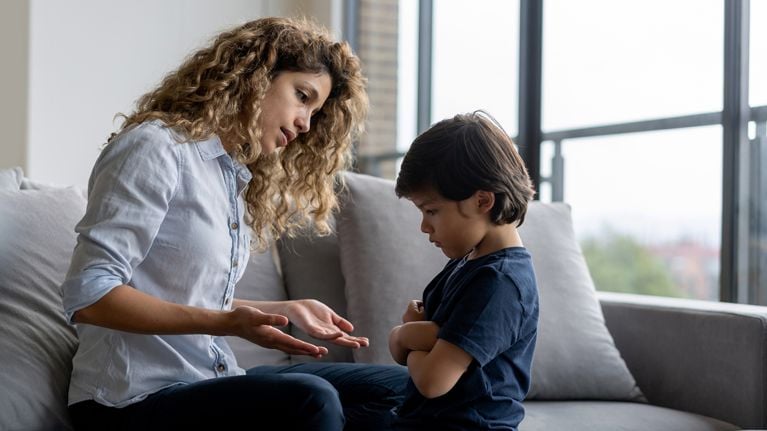Five Ways to Help Children with Challenging Behaviours
Pediatric OT shares the underlying reasons behind children's behaviour and how to offer more effective support.
By Dave Jereb
Jan 11, 2024
iStock
Parenting children with challenging behaviours isn't always easy, but there are simple and compassionate strategies that can help. In my two decades of supporting families as a pediatric occupational therapist, I have seen that there are underlying reasons behind every child's behaviour, and understanding these reasons empowers us to offer more effective support.
All Behaviours Have a Reason
Every behaviour serves a purpose and fulfils a specific need. Challenging behaviours often stem from the child's attempt to find comfort and safety within themselves, although they might not even be aware of the exact reasons behind their actions.
When children exhibit challenging behaviours, they are typically far from calm and connected but closer to a 'fight' or 'flight' response mode. In this state, they cannot engage in higher-level thinking and reasoning as they focus on restoring a sense of safety in their minds, bodies, and emotions. Therefore, caregivers need to play the role of detectives, seeking to discover the catalysts behind their behaviour.
Try Not to Take it Personally
When children behave in ways that we find challenging, it's natural to take it personally. We might assume they're being manipulative or intentionally misbehaving. Such judgments can influence our perception of the situation and our reactions. Recognizing this enables us to shift from a subjective to an objective perspective.

What is the Objective Behaviour?
Before we can discover the reason for a behaviour and the 'Why' of it, we need to take an objective look at the 'What' of the behaviour. Subjective observations are our opinions of what is happening, while objective observations are the facts.
In my new book, 'Challenging the Story: A Surprisingly Simple Approach to Supporting Children with Challenging Behaviours,' Mrs. Hoo, a teacher with extensive experience, shares a story that underscores the importance of examining behaviours objectively.
Mrs. Hoo relays how she has often been called to a school because a child she supports is 'attacking' other children. However, it becomes clear that 'attacking' is a subjective description, as we cannot discern the child's true intentions. Mrs. Hoo suggests that even 'hitting' is a subjective term and proposes a more precise description – the child is 'moving their hand in the direction of other kids' faces.'
Her mentee, Jenny, initially appears unconvinced. Mrs. Hoo explains that many children feel unsafe, reacting defensively to touch, sounds, or unexpected intrusions into their personal space. The critical insight is that they are not actively seeking to harm others, changing how we should respond.
She also shares an example in which a child clumsily attempts to interact or play with others, inadvertently making the other child feel attacked. She parallels her experience with her 5-month-old grandson playfully batting her face as she nibbles his hands, noting that this is much less endearing when the child is older.
However, the intention behind it remains unchanged. Understanding the 'what' objectively provides the pathway to uncovering the 'why' behind the behaviour, which requires a different response.
Understanding the 'Why' Behind the 'What'
To understand why a child behaves a certain way, we must consider two crucial elements: antecedents and consequences.
Antecedents encompass events preceding the child's behaviour, including the day's events, how they slept, and previous experiences in similar contexts. While not technically antecedents, it's essential to consider the child's developmental level and understanding, which also influence their responses.
Consequences refer to what typically follows the behaviour. For instance, if a child is removed from class for disruptive behaviour during literacy, the consequence may be that they can avoid showing that they have difficulty reading. As Mrs. Hoo remarks, 'Today's consequence is tomorrow's antecedent,' indicating that our responses can make behaviours more likely to occur in the future.
We often unveil the underlying reason by examining behaviour objectively, considering the preceding events, and the typical consequences. Parents are empowered to address the root cause rather than merely managing symptoms, enabling proactive responses over reactive ones.

Connection
In a logical sequence, our final step would involve creating a plan aligned with the 'Why?' which is undoubtedly important. However, more important than what you do is how you do it.
Connection is the linchpin. When you, as a caring and composed parent, establish a strong connection with your child, their mind becomes more organized, enabling them to access their capacities for thinking and reasoning.
The research shows that a brain engaged in a warm, shared connection is less prone to 'fight or flight' responses, typically contributing to challenging behaviours. This connection gives the child a sense of safety and security, making them more receptive to engagement and learning.
A contemporary, evidence-based approach to supporting children with challenging behaviours is surprisingly straightforward, although not necessarily easy. It requires us to challenge our subjective perspective, identify the reasons behind behaviours, and proactively devise a plan to address them.
Most importantly, the plan should be executed through connected and compassionate engagement with the child. Even brief moments of shared connection light up the neural wiring of connection, enabling the child to access their thinking, reasoning, and emotional brains.
While supporting behaviours in children may be challenging, it can be simplified by shifting your focus from the 'what' of the behaviour to the 'why' and supporting them through a shared connection.
Author
Dave Jereb is a visionary pediatric occupational therapist who has shown unwavering commitment to enhancing the lives of children for over two decades. Dave and his equally dedicated wife, Kathy, co-founded MoveAbout Therapy Services in 2008 and have revolutionized pediatric occupational therapy in Australia.
Weekly Newsletter
Keep up with your baby's development, get the latest parenting content and receive special offers from our partners